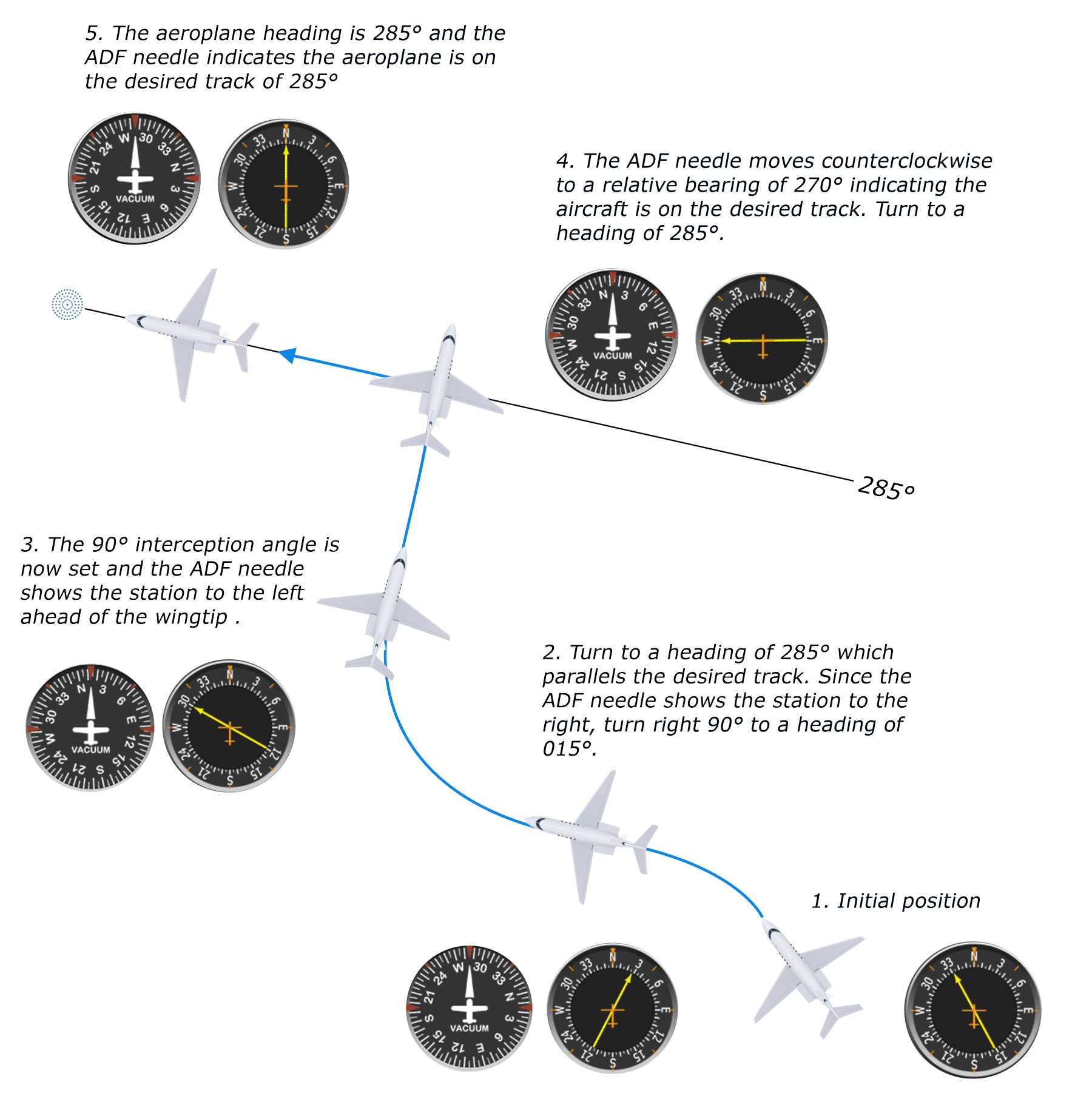Intercepting a Track to a Station
To intercept a desired ADF track to a station, first determine the aircraft’s position relative to that track by turning to the same heading as the desired track. Next, turn 90° from the parallel heading in the direction of the ADF needle. As you approach the desired track the needle will move towards either a 090° or a 270° relative bearing depending on whether you are left or right of the desired track. As the needle nears the wing-tip position, turn inbound on the desired track.
Example
In the figure below the aircraft is south of track with the ADF needle reading 030°. For an intercept angle of 90°, a heading of 015° would be required. When established on the intercept heading, the ADF will indicate the station is to the left and ahead of the wing tip. When the angle opens to a relative bearing of 270°, the aircraft is on the desired track and a turn should be made to the desired heading of 285°. If after turning to parallel the required track the ADF needle indicates a relative bearing between 090° clockwise to 270°, the beacon is behind the aeroplane. From this position, you will be unable to use the 90° intercept method to establish yourself on an inbound track of 285°.

Although a 90° intercept angle is the shortest route to a desired radial or track, it isn’t the shortest route to the station. As you become more proficient in the basic intercept technique, your instructor will show you how to use shallower intercept angles that will take you more directly to your destination. In these cases, care must be taken to achieve the intercept before reaching the station. Below are some useful tips when using intercept angles less than 90°.
The use of a shallower intercept angle is also often used when intercepting near a station where the radials or tracks are close together, or when correcting for wind drift.
